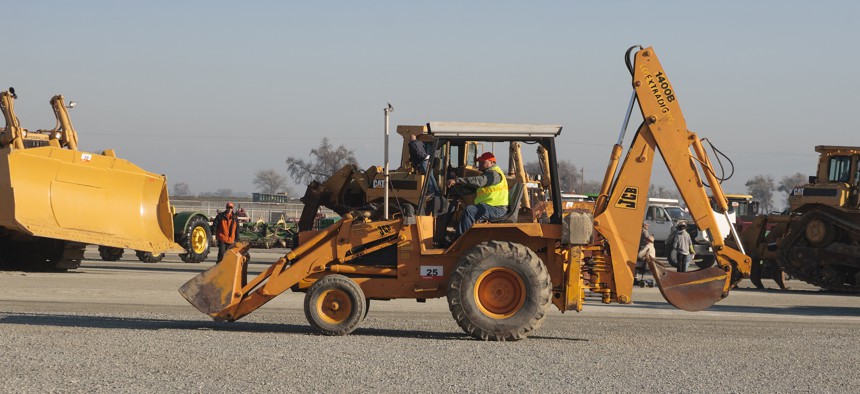U.S. House Committee OKs Brownfields Legislation

Shutterstock

Connecting state and local government leaders
The bill has some bright spots for local governments.
WASHINGTON — Changes that local government groups have been pushing for were included in legislation a U.S. House committee approved on Wednesday that would reauthorize the Environmental Protection Agency’s brownfields program.
Grants awarded to state and local governments through the program help to cover the cost of cleaning up and redeveloping contaminated properties, like abandoned factory complexes and gas stations. EPA estimates that there are more than 450,000 brownfield sites across the U.S.
The legislation would allow up to $200 million in brownfields funding for each fiscal year between 2017 and 2021 and up to $50 million in each of those years to support state response programs. The funding levels align with those Congress has authorized previously.
The House Energy and Commerce Committee passed the bill by a voice vote.
Organizations including the National League of Cities, the U.S. Conference of Mayors, the National Association of Counties and the National Association of Regional Councils advocated for several key changes to the program that House lawmakers incorporated into the bill.
One change the groups wanted to see was for the size limit for cleanup grants to be increased.
The bill would raise the maximum to $500,000 from $200,000 and would give EPA an option to waive that limit and award up to $750,000. The local government groups had suggested higher levels—up to $1 million for individual sites and $2 million in special circumstances.
The legislation would also establish “multipurpose grants” of up to $1 million that could be used for assessment, cleanup and other activities at multiple brownfield locations throughout a community.
Additionally, the bill would make properties eligible for grant funding that governments acquired before the January 2002 enactment of the Brownfields Revitalization Act. And it would exempt state and local governments from certain federal environmental liability statutes when they take possession of contaminated property involuntarily through events like bankruptcy or abandonment.
The U.S. Conference of Mayors applauded the committee’s passage of the bill.
“We commend Congress for listening to the Conference and making improvements to the bill including: increasing cleanup grant amounts, creating a multipurpose grant, and maintaining funding levels,” Elizabeth, New Jersey Mayor Christian Bollwage said in a statement.
Programs do not necessarily receive the amount of money outlined in authorization bills. It’s up to congressional appropriators to make decisions about the amount of funds to provide.
An EPA budget document from May shows brownfields spending spread across three categories.
Actual dollars going toward the program in fiscal 2016 included $24 million under a category called Environmental Program and Management, $88 million for brownfields projects funded through what are known as State and Tribal Assistance Grants and $48 million in so-called categorical grants.
The House Transportation and Infrastructure Committee also has jurisdiction over the brownfields program.
A staffer with the committee told Route Fifty on Wednesday that the panel has been “kind of taking a back seat” on brownfields reauthorization legislation. But, he said, it’s possible the committee will put a bill on the table for the program before the end of July. That legislation could potentially be merged with the Energy and Commerce bill before getting sent to the House floor for a vote.
Bill Lucia is a Senior Reporter with Government Executive’s Route Fifty and is based in Washington, D.C.

NEXT STORY: Federalism Is Dead, Long Live Federalism





